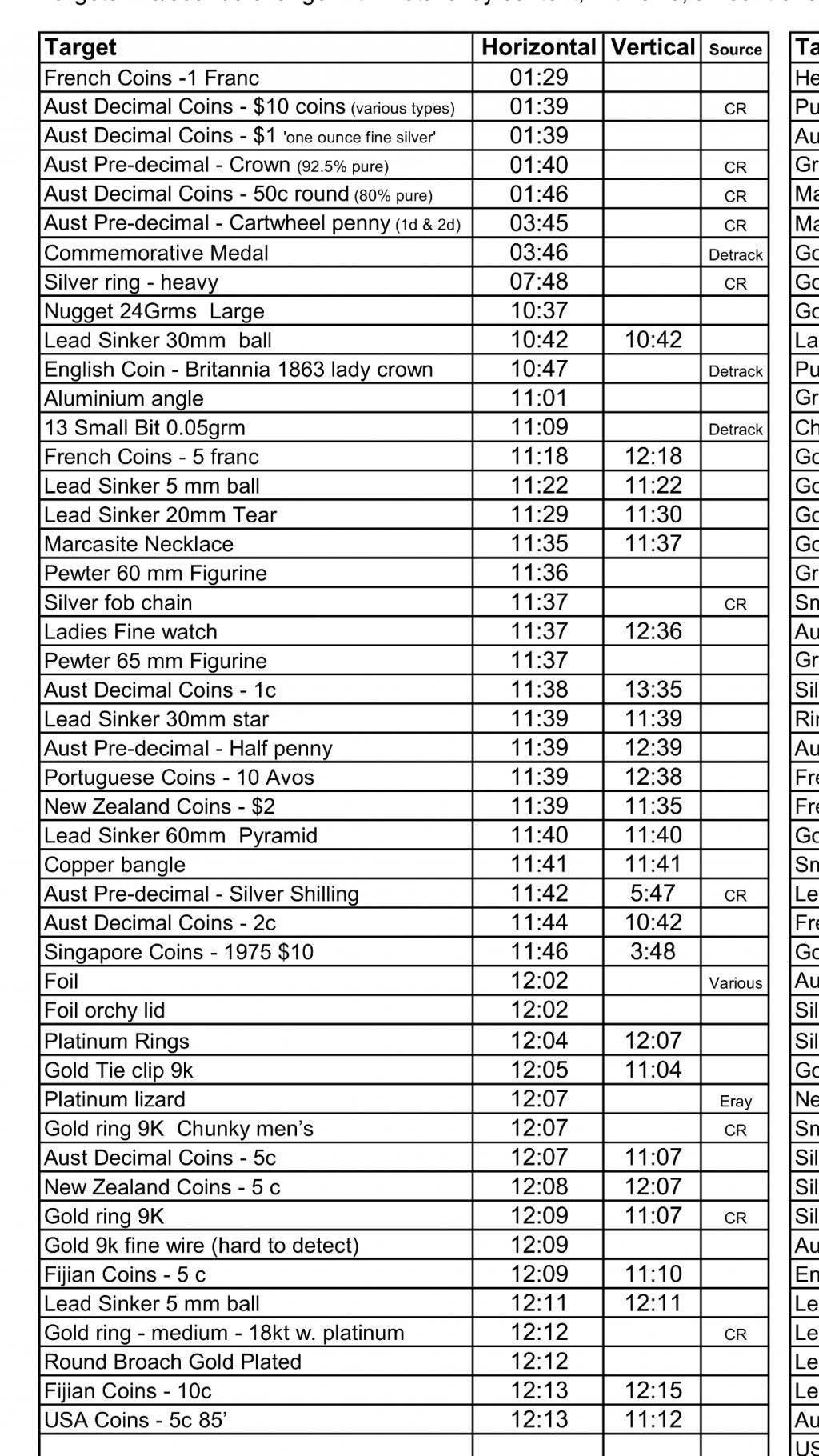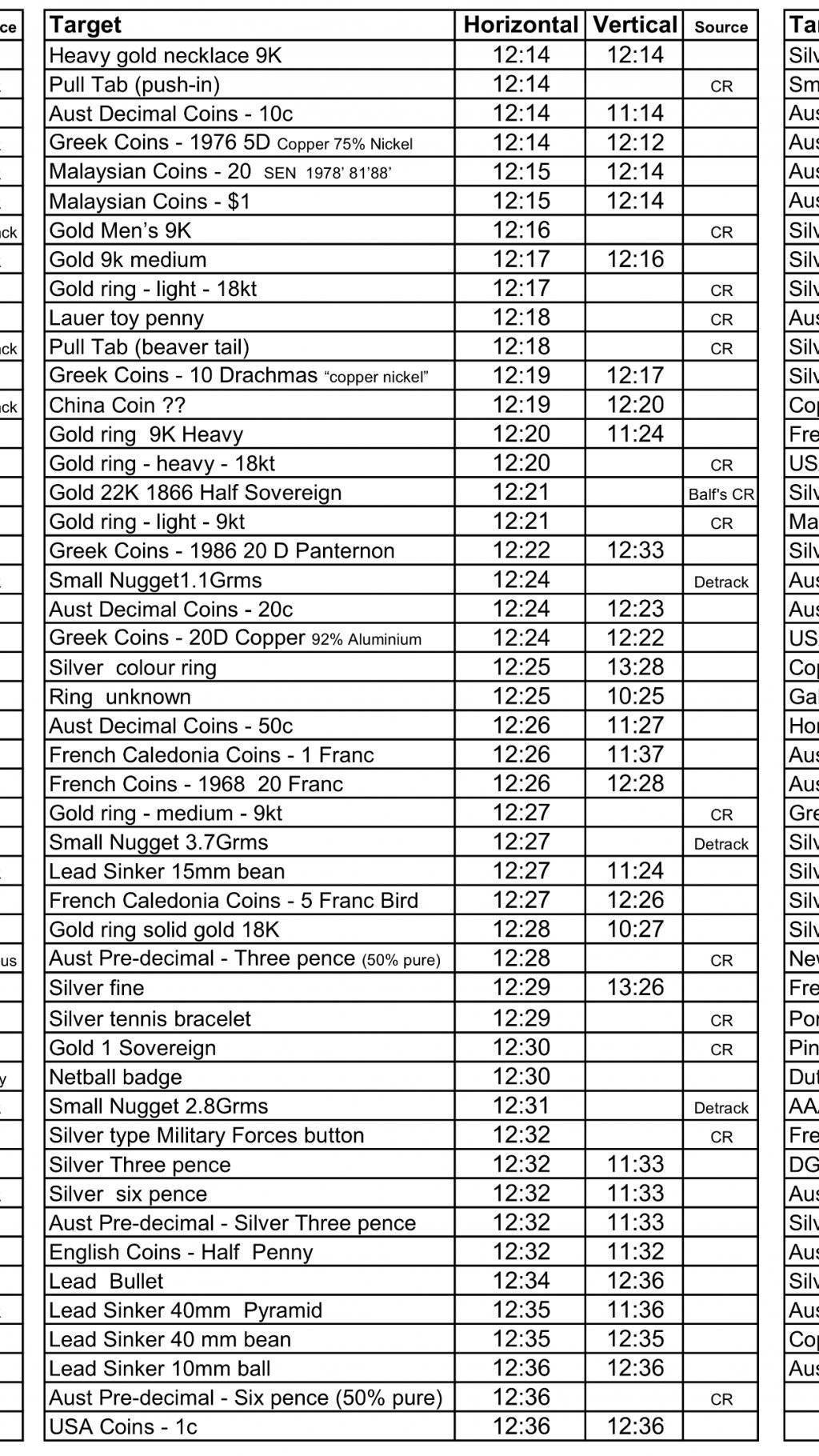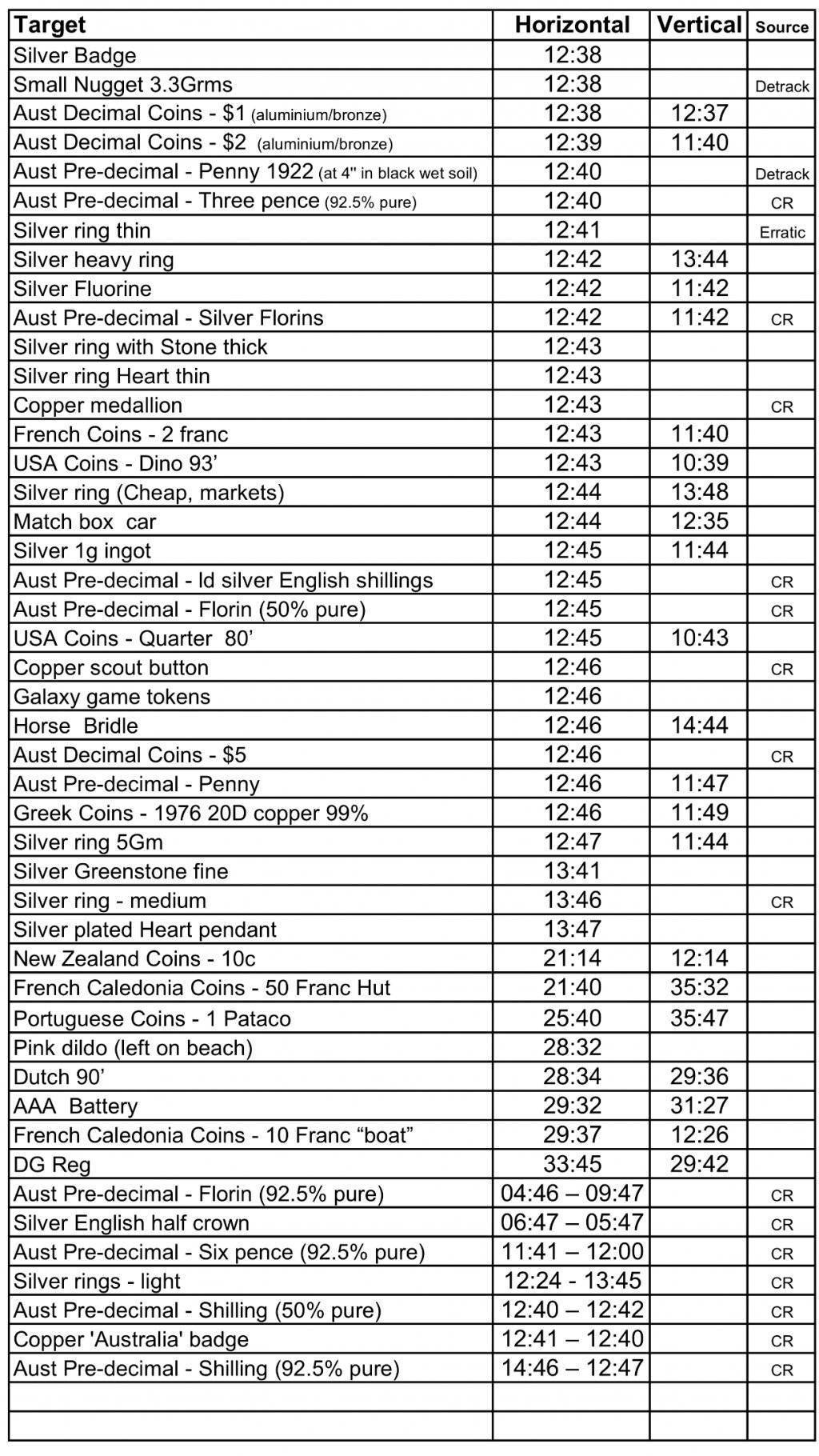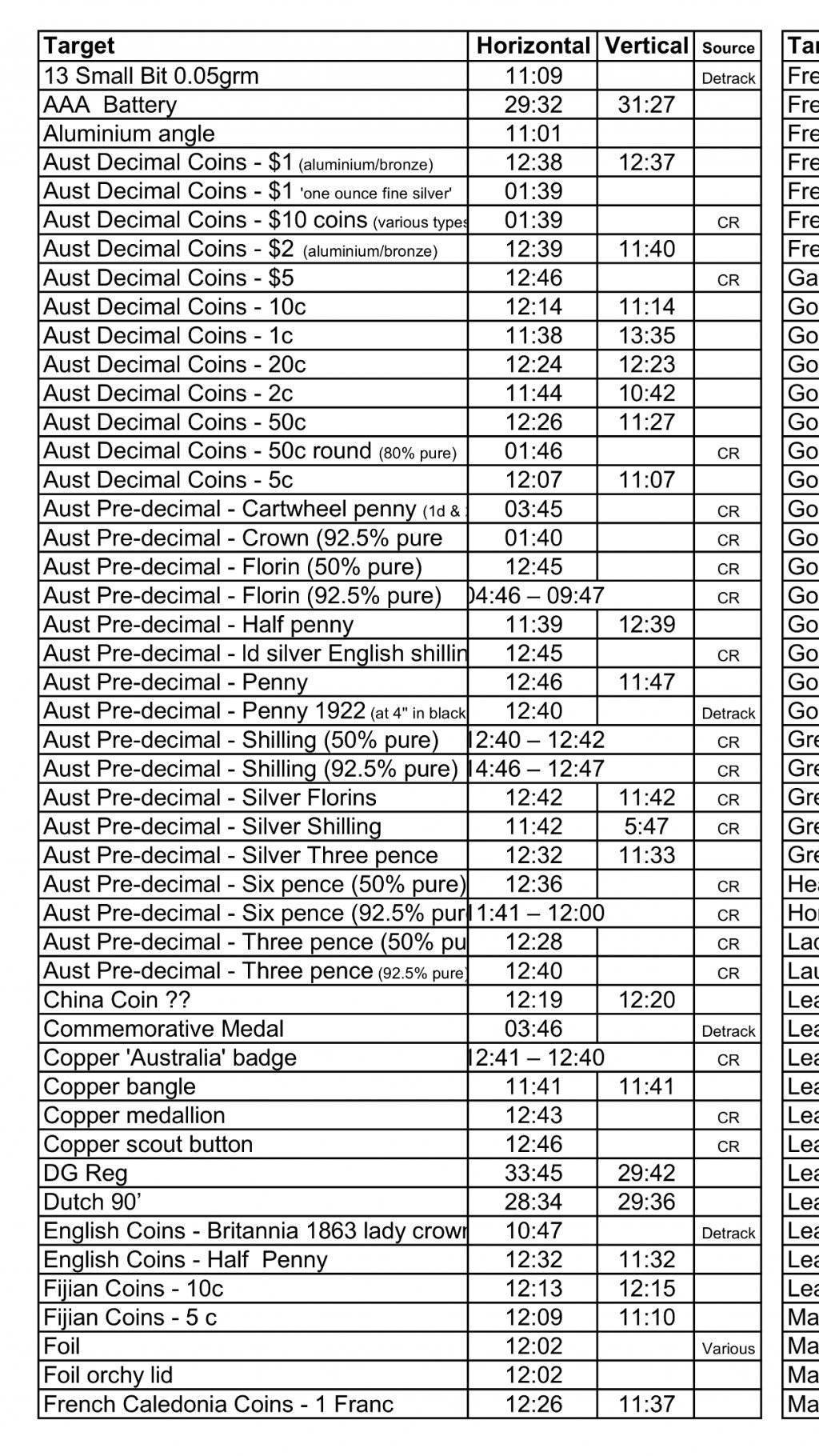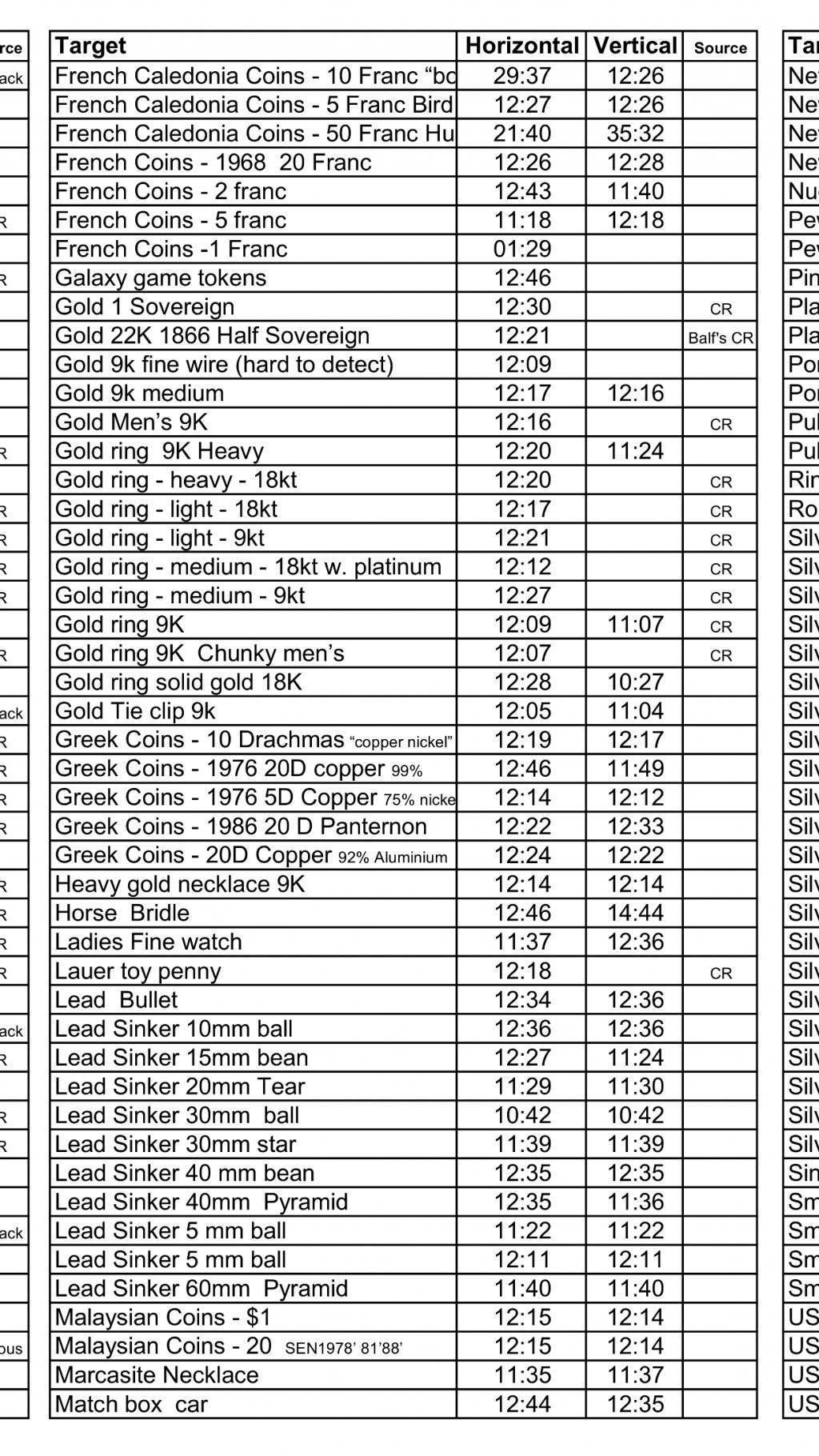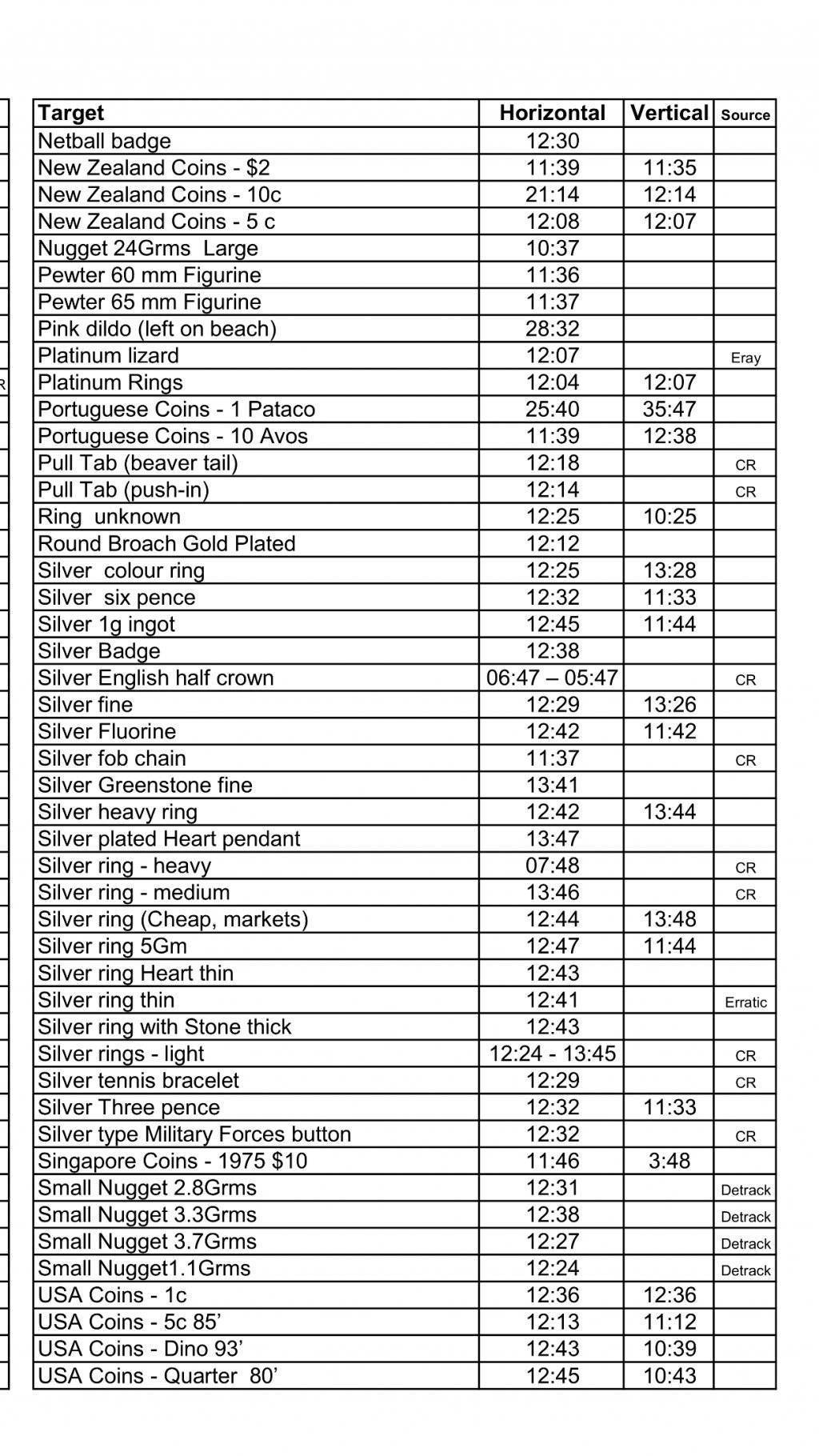In my limited time with the Explorer, I find that a lot of the junk targets that ring up similar to coins are nearly always reasonably shallow in depth. Get them any deeper and the tones/vdi numbers get real real jumpy, unlike coins that seem to still have repeatable high tones with high conductor/low iron ID's - unless on edge or partly masked. If I get a good repeatable conductor that sits deep on the depth meter, I start to get excited.
I don't know whether I would want a screw cap to sound the same at depth vs 1" from the surface, much better to have junk target tones/ID's degrade at depth, leaving the more highly conductive coin targets stand out from the crowd. I will usually run on tones only, then check the ID once I come across a high conductor. I have also been running in the ferrous tones setting which gives all ferrous targets a low tone, and all non-ferrous targets high tones, as iron rings up as a high conductor in the conductive tones setting which gets tiring to listen to (31:30). Just a thought anyway,
The four digit target ID, whilst it does degrade to a degree at depth, still holds a lot of useful info, much more so over the two digit ID on other detectors.
Whilst the CTX has a broader ID range, and should be able to ID more accurately at depth running FBS2, I thought this may be of interest anyway.
Testing of a few junk targets on surface, then at 6" down had the following results on the Explorer SE with 11" coil, all-metal, deep setting, and sensitivity at 28. (Don't take as gospel, results will vary in other conditions).
Large steel nut
31:27-30 on surface
31:30 buried
Modern pull tab
09:12 on surface
00:10 through to iron range, very jumpy response - buried
Beaver tale pull tab
08:12 on surface
06:12 through to iron range, very jumpy response - buried
Near new Coopers crown cap
00:07 on surface
00:08 buried
Old crown cap, partly crushed
00:04-06 on surface
Reads up to 31:30 buried, but jumps all over the place
Flattened aluminium screw cap
07:26 on surface
23:27, basically ID's all over the place when buried
Penny
04:27 on surface
05:28 buried +/- 2
1925 Florin
00:28 on surface
00:27-29 buried
1943 6P
00:29 on surface
00:25-29 buried
Half penny
01:29 on surface
01:24-27 buried
$1
06:26 on surface
00:24-26 buried (jumpy ID, but still registers high conductive)
$2
07:26 on surface
00:22 upwards buried (jumpy ID, but still registers high conductive)
So in general, most coins will continue to have repeatable high conductivity tones at depth, but the ID may vary by a few numbers either way, but still show as a high conductor with low iron. Of course this will depend on how junky or iron ridden the ground is that you are working, or how the target sits in the ground.
Whilst I still do dig some junk, it is usually out of curiosity and very much part of a learning process, especially if I get a sqeak of a deep high conductor amongst a lot of junk, sometimes it is just warranted to investigate. The penny I found last night was about 7" down, and was the only target in a sea of pull tabs, crown caps, foil and aluminium ring pulls to give a consistant high tone on both swings, reasonably solid ID, and depth wise, it sat a lot deeper than the surrounding junk targets. So tonally, the good targets can really stand out running on an open discrimination screen (all metal), without resorting to discriminating targets.





